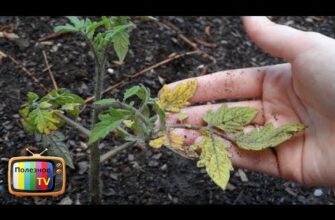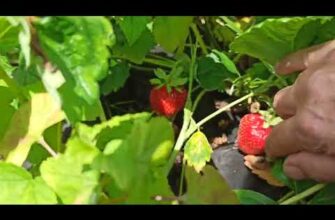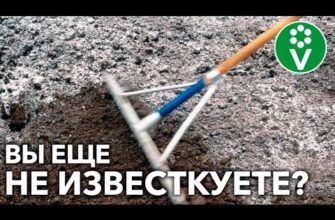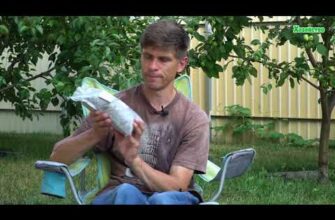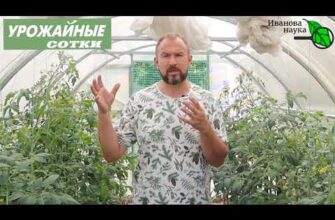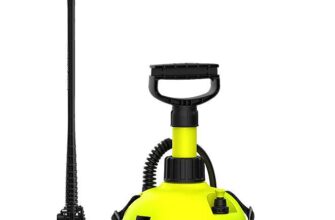- Как гарантировать выживаемость рассады перца?
- Освещение
- Подготовка семян
- Полив
- Создание комфортных условий
- Выбор сорта перца: влияние на приживаемость
- Подготовка почвы для посадки рассады перца
- Оптимальный способ хранения рассады перца
- Подготовка семян
- Условия хранения
- Полив
- Влияние полива на приживаемость рассады перца
- Степень освещения и её значение для рассады перца
- Температурные условия для приживаемости рассады перца
- Правильный выбор емкости для посадки рассады перца
- Защита от вредителей и болезней: важный аспект приживаемости рассады перца
- Нужда рассады перца в удобрениях
- Выбор удобрений
- Регулярное удобрение
- Оптимальный срок посадки рассады перца в грунт
- Процесс закаливания рассады перца
- Особенности полива рассады перца после посадки в грунт
- Вопрос-ответ:
- Какие сорта перца лучше всего подходят для выращивания в регионах с коротким летом?
- Какой подготовительный уход требуется для рассады перца перед посадкой в грунт?
- Как правильно посадить рассаду перца в грунт?
- Как часто и как поливать рассаду перца после посадки в грунт?
- Как защитить рассаду перца от вредителей и болезней?
- Видео:
- ПРО СКИНУЛ НУБА В ЛАВУ МАЙНКРАФТ ! НУБ ПРОТИВ ТРОЛЛИНГ ЛОВУШКА MINECRAFT Мультик
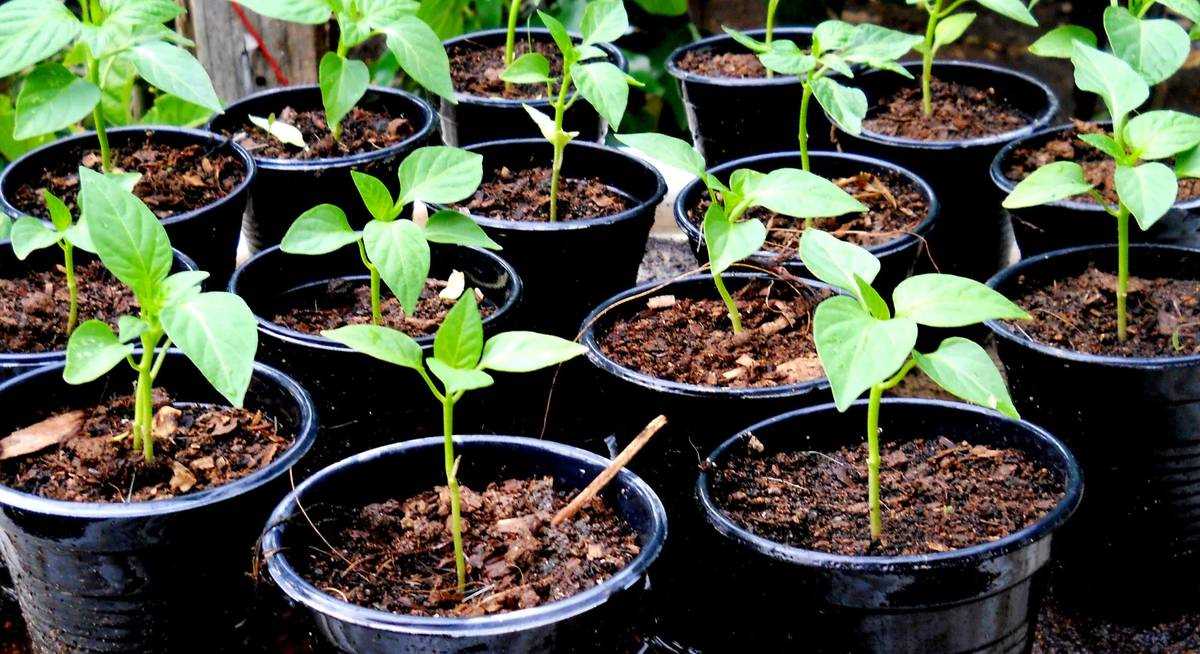
Успешное выращивание рассады перца зависит от множества условий, но одним из ключевых факторов является приживаемость семян. Чтобы растения правильно развивались и давали обильный урожай, необходимо правильно высадить рассаду. Какие секреты помогут достичь 100% приживаемости?
Первое, на что следует обратить внимание, это выбор качественных семян. Не стоит экономить на этом этапе, ведь от качества семян зависит будущий урожай. Приобретайте семена только у проверенных производителей.
Правильно высаживая рассаду перца, следует учесть несколько факторов. Полив – один из важнейших аспектов. Рассаду необходимо поливать регулярно, но не излишне. Избыточное количество влаги может привести к гниению корневой системы. Регулярный полив поможет обеспечить рассаде необходимое количество влаги для нормального роста и развития.
Освещение также играет важную роль в приживаемости рассады перца. Растения нуждаются в достаточном количестве света, чтобы выполнять фотосинтез. Поместите рассаду в хорошо освещенное место или используйте дополнительное искусственное освещение для обеспечения необходимого уровня света.
Как гарантировать выживаемость рассады перца?
Правильная посадка рассады перца является одним из ключевых факторов, обеспечивающих высокую приживаемость растений. Для этого необходимо учесть несколько важных условий.
Освещение

Семена перца требуют достаточного количества света для прорастания. Поэтому важно обеспечить освещение рассады в течение всего периода выращивания. Идеальным вариантом является использование искусственного освещения с помощью фитоламп или специальных ламп для растений.
Подготовка семян
Перед посадкой необходимо правильно подготовить семена перца. Для этого их рекомендуется проращивать во влажной среде перед посевом. Это поможет активизировать процесс всхожести и повысит приживаемость рассады.
Полив
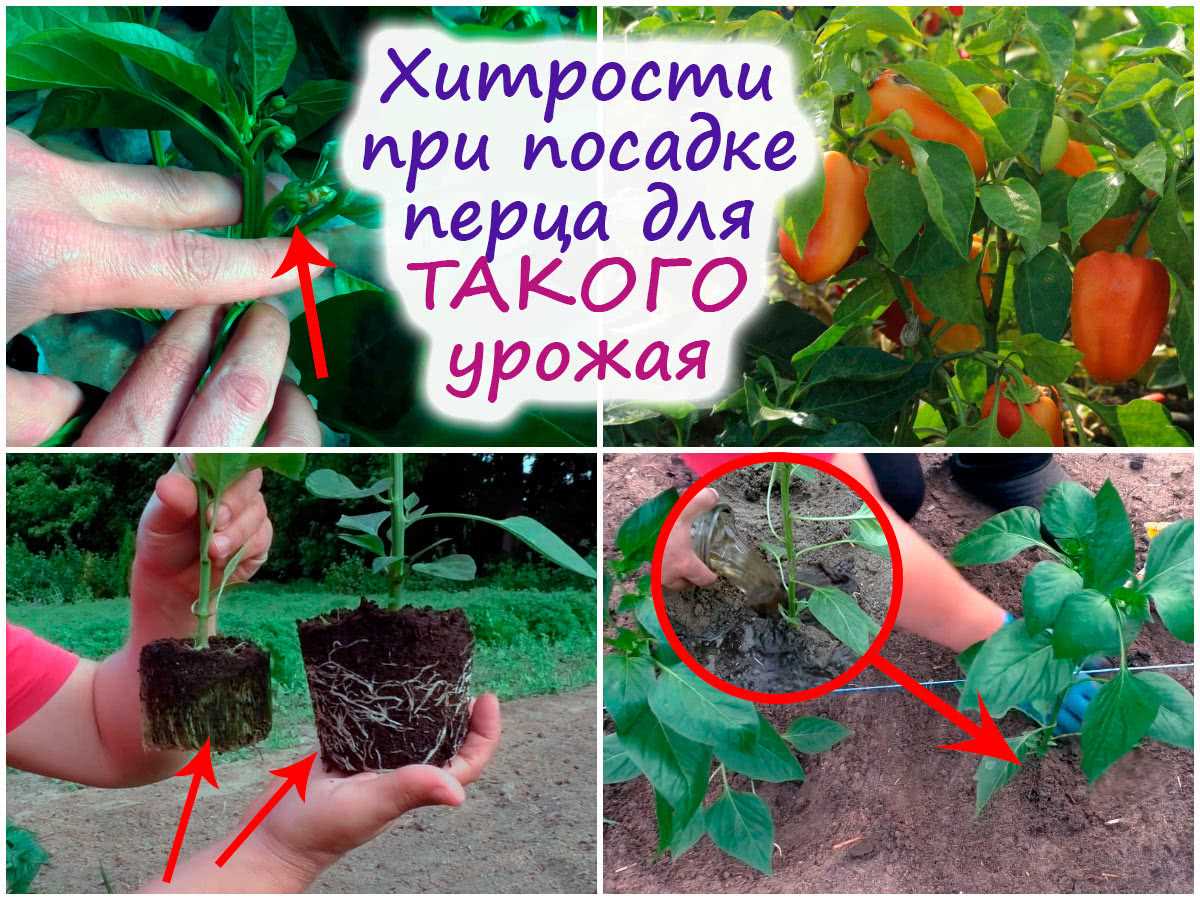
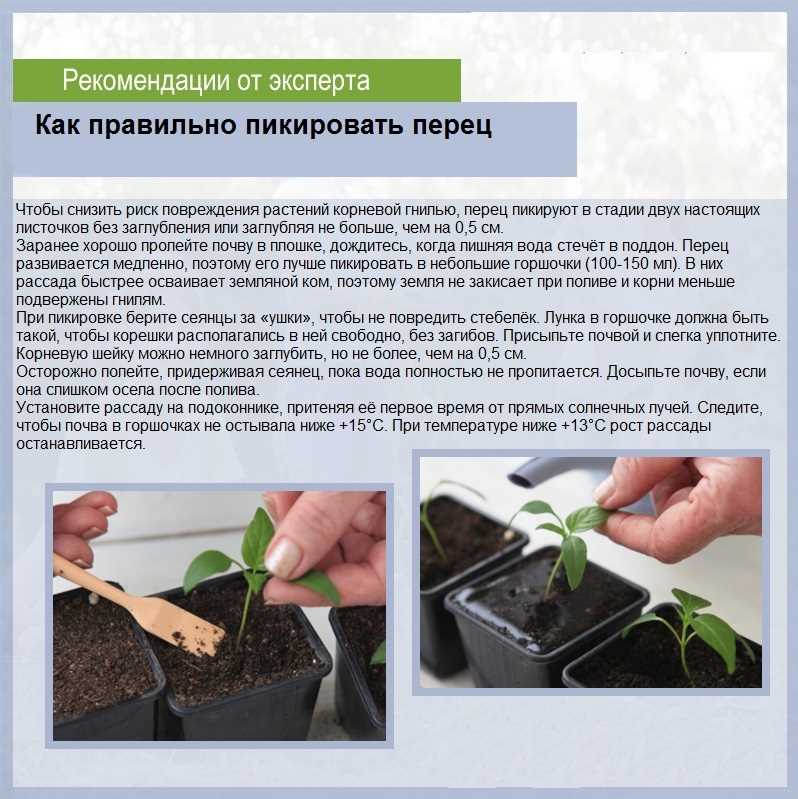
Растения перца предпочитают умеренный полив, поэтому необходимо следить за тем, чтобы почва в горшках с рассадой всегда была влажной, но не переувлажненной. Регулярный и правильный полив поможет обеспечить рассаде перца оптимальные условия для выживания и роста.
Создание комфортных условий
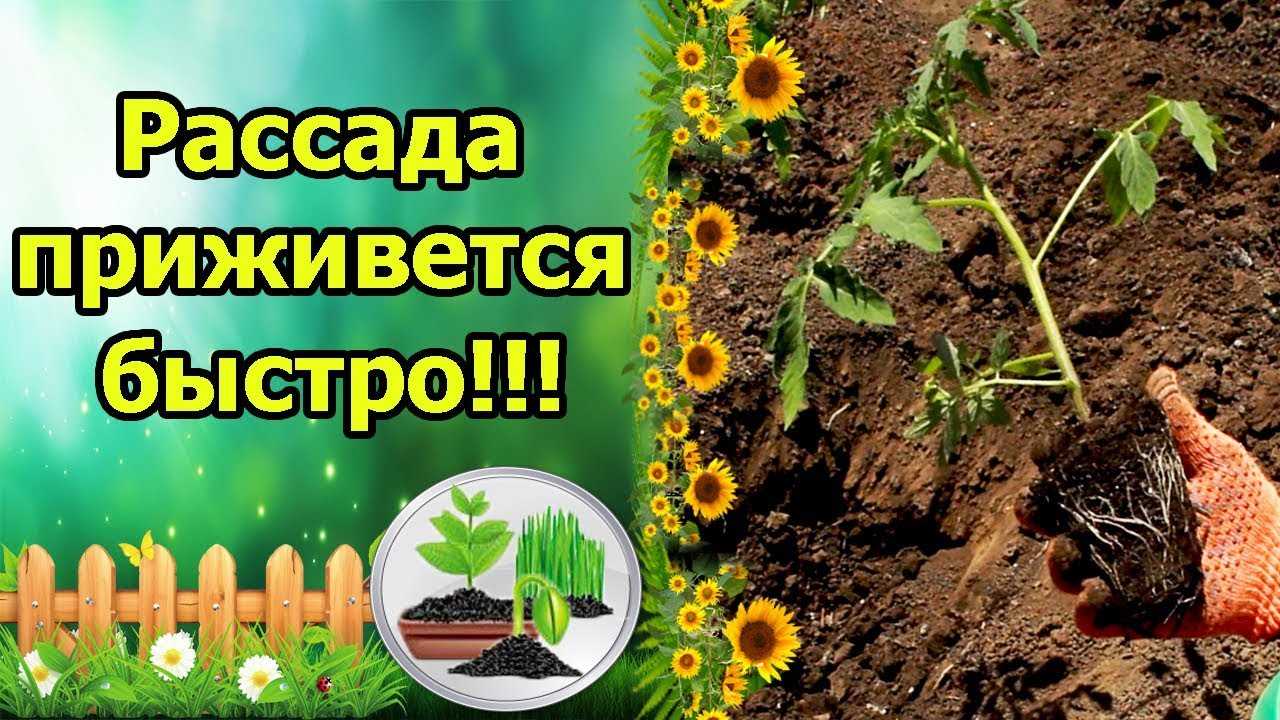
Для успешной приживаемости рассады перца необходимо создать комфортные условия. Растениям нужно тепло (не менее 18 градусов), но без сквозняков. Также важно обеспечить хорошую вентиляцию для предотвращения возникновения грибковых заболеваний.
Соблюдение всех этих рекомендаций поможет гарантировать выживаемость рассады перца и даст возможность получить крепкие и здоровые растения для дальнейшего выращивания.
Выбор сорта перца: влияние на приживаемость
Выбор сорта перца играет важную роль в обеспечении высокой приживаемости рассады. От правильного выбора сорта зависит как успешность выращивания, так и получение качественного урожая.
Одним из факторов, влияющих на приживаемость перца, является освещение. Некоторые сорта перца предпочитают яркое солнечное освещение, тогда как другие лучше развиваются в полутени или тени. При выборе сорта следует учитывать условия освещения на участке, чтобы обеспечить растениям оптимальные условия для роста и развития.
Также важно обратить внимание на качество семян. Надежные производители предлагают качественные семена перца, которые обеспечивают высокую приживаемость рассады. Не стоит экономить на семенах, так как некачественные семена могут привести к низкой приживаемости и плохому развитию рассады.
Для повышения приживаемости рассады перца также важно создать оптимальные условия для роста и развития растений. Регулярный полив, умеренное удобрение и поддержание оптимальной температуры в помещении способствуют хорошей приживаемости рассады и ее здоровому развитию.
Подготовка почвы для посадки рассады перца
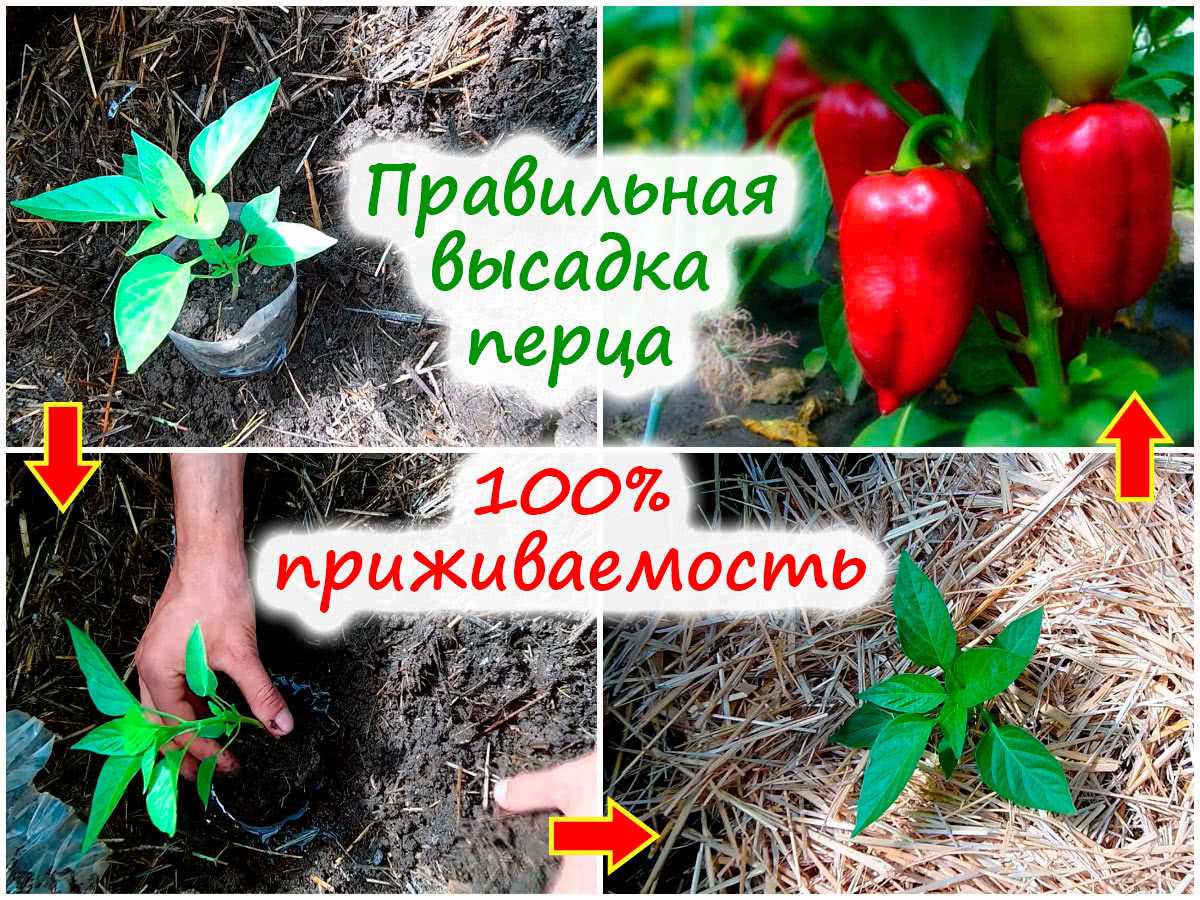
Правильная подготовка почвы для посадки рассады перца является важным этапом, который обеспечивает оптимальные условия для роста и развития растений. Освещение играет важную роль в этом процессе, поэтому выбирайте место с достаточным количеством солнечного света для высадки рассады перца.
Перед высадкой рассады перца подготовьте почву. Семена перца следует посадить на глубину около 1-1,5 см. Хорошим вариантом является использование подложки, которая способствует лучшей приживаемости растений. Также необходимо обеспечить оптимальные условия для прорастания семян, поддерживая тепловой режим и поддерживая влажность почвы.
Особое внимание следует уделить поливу посадочных ям. После высадки рассады перца, полейте каждое растение достаточным количеством воды. Важно поддерживать умеренную влажность почвы и избегать переувлажнения, так как это может негативно сказаться на приживаемости рассады перца.
Таким образом, правильная подготовка почвы для посадки рассады перца и создание оптимальных условий, таких как правильное освещение, полив и поддержание влажности почвы, поможет обеспечить высокую приживаемость рассады и получить здоровые и крепкие растения перца.
Оптимальный способ хранения рассады перца
Хранение рассады перца является важным этапом перед ее высадкой в открытый грунт. Правильное хранение обеспечивает высокую приживаемость растений и успешное развитие. Важно создать оптимальные условия, чтобы рассада перца сохраняла свою жизнеспособность.
Подготовка семян
Перед хранением рассады перца необходимо правильно подготовить семена. Они должны быть здоровыми, сухими и без повреждений. Если семена перца были приобретены, следует проверить их качество. Плохое качество семян может привести к низкой приживаемости рассады.
Условия хранения
Для оптимального хранения рассады перца необходимо создать определенные условия. Рассаду следует хранить в прохладном и темном месте, при температуре около +10°C и относительной влажности около 70-80%. Освещение должно быть минимальным, чтобы предотвратить преждевременное прорастание и рост растений.
Полив
Во время хранения рассады перца необходимо регулярно проверять и поддерживать оптимальный уровень влажности. Можно увлажнять почву, но не допускать переувлажнения. Полив следует проводить осторожно, чтобы не повредить корни растений и не вызвать гниение.
Следуя этим рекомендациям, можно обеспечить оптимальное хранение и высокую приживаемость рассады перца. Правильное хранение поможет сохранить здоровье и силу растений, готовых к успешной высадке в открытый грунт.
Влияние полива на приживаемость рассады перца
Правильный полив имеет непосредственное влияние на приживаемость рассады перца. Недостаток или избыток влаги может негативно сказаться на развитии растений и повлечь за собой их гибель. Поэтому необходимо подходить к поливу с умом и вниманием.
Перец является требовательным к влаге растением, поэтому регулярный полив является одним из ключевых моментов в выращивании рассады перца. Оптимальный режим полива помогает создать комфортные условия для корневой системы растений и способствует их активному росту и развитию.
Для полива рассады перца необходимо использовать теплую, отстоявшуюся воду. Полив следует проводить регулярно, чтобы поддерживать оптимальный уровень влажности почвы. Однако не стоит переусердствовать с поливом, чтобы не вызвать гниение корней и другие проблемы.
Кроме того, важно учитывать освещение и температуру в помещении, где высаживается рассада перца. От них также зависит потребность растений в поливе. При ярком освещении и высокой температуре почва быстрее высыхает, поэтому полив нужно проводить чаще.
Семена перца следует высаживать во влажную почву и увлажнять ее после посадки. После этого растения нужно поливать мягким струей воды, стараясь не попадать на листья и стебли. Это поможет избежать возникновения грибковых заболеваний и сохранить рассаду в чистоте и здоровье.
Степень освещения и её значение для рассады перца
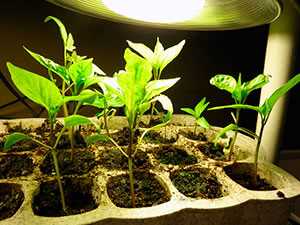
Освещение играет важную роль в процессе выращивания рассады перца. От правильного освещения зависит полноценное развитие семян и их приживаемость после высадки в грунт.
Перец — светолюбивое растение, поэтому для получения качественной и здоровой рассады необходимо обеспечить достаточное количество света. Отсутствие света или его недостаток может привести к вытягиванию растений, ослаблению их иммунной системы и, как следствие, к снижению приживаемости в грунте.
Для обеспечения необходимой степени освещения рекомендуется выращивать рассаду перца под фитолампами или использовать дополнительное освещение, особенно в зимний период. Фитолампы имитируют естественный свет, не только в спектре, но и в интенсивности, что позволяет достичь оптимальных условий для роста и развития растений.
Кроме того, важно правильно расположить рассаду перца относительно источника света. Рекомендуется устанавливать горшки с рассадой на подставку или стеллаж таким образом, чтобы все растения получали равномерное освещение. Помимо этого, необходимо периодически поворачивать горшки, чтобы растения равномерно получали свет со всех сторон.
Так стоп!!! Вы всё ещё не подписаны на наши каналы в Телеграмм и Дзен? Посмотрите: ТГ - (@historyfantasydetectivechat) и Дзен (https://dzen.ru/myshortsstorys)
Температурные условия для приживаемости рассады перца
Правильное освещение — один из ключевых факторов для успешной приживаемости рассады перца. Растения перца требуют достаточного количества света для нормального развития, поэтому необходимо обеспечить им яркое и длительное освещение. Для этого можно использовать искусственное освещение, такое как фитолампы или лампы накаливания, которые обеспечат нужный уровень света в течение дня.
При высадке рассады перца необходимо учесть температурные условия. Оптимальная температура для приживаемости семян перца составляет около +25 градусов Цельсия. При этой температуре семена быстро прорастают и дают крепкую рассаду. После высадки растений в грунт, следует поддерживать температурный режим в пределах +20-+25 градусов Цельсия, чтобы обеспечить оптимальные условия для их активного роста и развития.
Особое внимание следует уделить поливу рассады перца. Растения нуждаются в достаточном количестве влаги, но при этом не должны быть переувлажнены. Рекомендуется поливать рассаду перца умеренно, под корень, избегая попадания влаги на листья. Недостаток влаги может привести к засыханию растений, а избыток – к гниению корней и развитию грибковых заболеваний.
Важно помнить, что условия приживаемости рассады перца должны быть оптимальными не только во время посадки, но и на протяжении всего периода выращивания растений. Регулярный контроль температуры, освещения и полива поможет обеспечить рассаде перца комфортные условия для полноценного роста и развития.
Правильный выбор емкости для посадки рассады перца
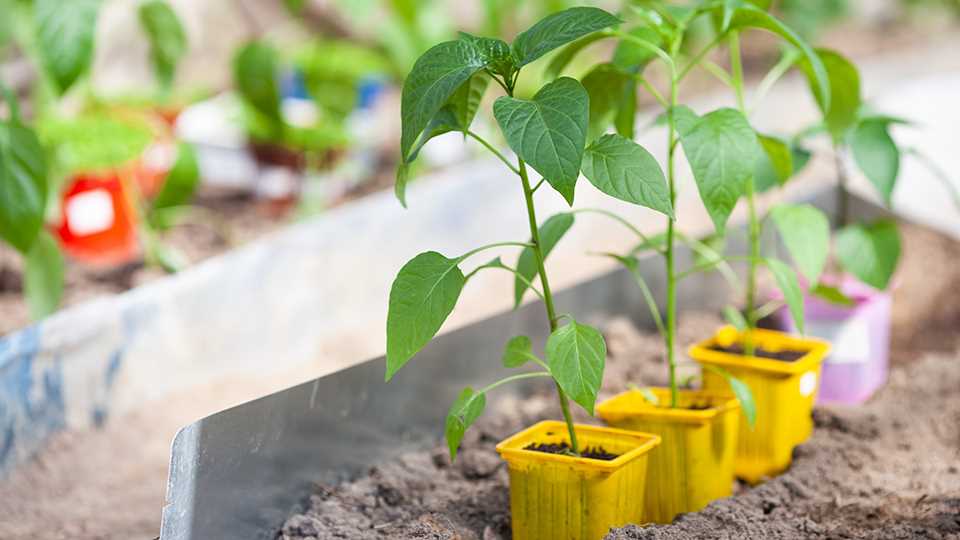
Один из ключевых моментов, который может повлиять на высадку и приживаемость рассады перца, это правильный выбор емкости для посадки. От выбранной емкости будет зависеть развитие корневой системы, а значит и дальнейшее развитие растений.
При посадке рассады перца в емкости необходимо учесть несколько факторов. Во-первых, емкость должна быть достаточно вместительной, чтобы корни растения имели достаточно места для развития. Во-вторых, она должна быть удобной для перемещения и перевозки, особенно если рассаду планируется высадить на открытый грунт. В-третьих, выбранную емкость необходимо правильно подготовить перед посадкой рассады.
Для посадки рассады перца можно использовать различные емкости: пластиковые горшки, стаканчики из торфа, ячейки специальных пластиковых лотков и другие. Важно помнить, что каждый вид емкости имеет свои особенности и преимущества. Например, пластиковые горшки обеспечивают хорошую вентиляцию корневой системы растений, а ячейки пластиковых лотков позволяют удобно высаживать рассаду в открытый грунт.
При выборе емкости для посадки рассады перца также необходимо учесть условия выращивания: освещение и полив. Некоторые емкости имеют отверстия в дне, что позволяет избежать задержки влаги и обеспечивает хороший сток воды. Важно помнить, что перец любит свет, поэтому выбранная емкость должна обеспечивать достаточное освещение для растения.
Защита от вредителей и болезней: важный аспект приживаемости рассады перца
Для обеспечения высокой приживаемости рассады перца необходимо принимать меры по защите от вредителей и болезней. С самого начала важно выбирать качественные семена, чтобы устойчивость к различным патогенам была максимальной. При посадке рассады в грунт необходимо обеспечить оптимальные условия для роста и развития растений.
Один из важных аспектов — правильный полив. Влага должна быть достаточной, но не избыточной. Переувлажнение может привести к гниению корней и развитию грибковых заболеваний. При поливе следует избегать попадания воды на листья, чтобы не создавать условия для развития грибков и бактерий.
Освещение также играет важную роль в защите рассады от болезней. Недостаток света может привести к вытягиванию растений, ухудшению их иммунитета и повышенной восприимчивости к болезням. Поэтому необходимо обеспечить рассаде достаточное количество света, особенно в начальном периоде выращивания.
Высаживая рассаду перца в грунт, следует учитывать также условия окружающей среды. Если в данном районе известна высокая активность определенных вредителей, можно применить меры по их профилактике. Например, можно использовать средства от насекомых или сетки, чтобы предотвратить появление вредителей на рассаде.
Таким образом, защита от вредителей и болезней является важным аспектом обеспечения высокой приживаемости рассады перца. Правильный выбор семян, регулярный полив, достаточное освещение и превентивные меры против вредителей помогут создать оптимальные условия для развития здоровых и сильных растений.
Нужда рассады перца в удобрениях
Для обеспечения высокой приживаемости рассады перца необходимо правильно подготовить почву и обеспечить ее достаточным количеством питательных веществ. Одним из ключевых моментов является правильное удобрение рассады.
Выбор удобрений

Перец является растением, требующим большого количества питательных веществ. Для его успешного выращивания необходимо использовать удобрения, которые обеспечат рассаду необходимыми элементами питания.
Особое внимание следует уделить удобрениям, содержащим азот, фосфор и калий. Азот способствует развитию зеленой массы растений, фосфор улучшает корневую систему, а калий обеспечивает устойчивость растений к стрессовым условиям и болезням.
Регулярное удобрение
Удобрения следует применять регулярно в течение всего периода выращивания рассады перца. Начинать удобрение рассады необходимо сразу после появления первых настоящих листьев. При этом стоит помнить, что переизбыток удобрений может быть негативным для растений, поэтому следует соблюдать рекомендуемые дозы и режим удобрений.
Правильное удобрение рассады перца позволит создать оптимальные условия для ее развития, повысить приживаемость и получить здоровые и урожайные растения.
Оптимальный срок посадки рассады перца в грунт
Для того чтобы обеспечить высокую приживаемость рассады перца, необходимо правильно выбрать оптимальный срок для ее высадки в грунт. Одним из ключевых факторов является освещение. За две недели до высадки рассады перца необходимо начать увеличивать ее освещение, чтобы семена привыкли к яркому свету и не переживали стресс при пересадке в грунт.
Полив также играет важную роль в успешной посадке рассады перца. За несколько дней до высадки рассады, поливайте ее умеренно, чтобы земля была достаточно влажной, но не перенасыщенной водой. Это поможет приживаемости рассады и укоренению в грунте.
Выбирая оптимальный срок для высадки рассады перца в грунт, необходимо учитывать климатические условия и температуру в вашем регионе. Посадка рассады перца следует производить в период, когда минимальная ночная температура не опускается ниже +10°C. Это обеспечит рассаде комфортные условия для приживания и роста.
Итак, чтобы правильно высадить рассаду перца в грунт и обеспечить ее высокую приживаемость, необходимо учитывать освещение, полив и климатические условия. Не стоит спешить с посадкой рассады, выберите оптимальный срок и создайте для нее комфортные условия, и ваш перец будет радовать вас вкусным и обильным урожаем.
Процесс закаливания рассады перца
Перед посадкой рассады перца в открытый грунт необходимо провести процесс закаливания. Закаливание рассады перца помогает укрепить растения и повысить их приживаемость в новых условиях.
Закаливание рассады перца начинается за 10-14 дней до высадки на постоянное место. Для этого рекомендуется постепенно привыкать растения к новым условиям, изменяя их освещение, температуру и полив.
Во время закаливания рассады перца следует уменьшить количество поливов, чтобы растения приспосабливались к более сухим условиям в открытом грунте. Правильно организовать полив поможет подкисленная вода с температурой около 20 градусов.
Освещение также играет важную роль в процессе закаливания рассады перца. Начиная с первого дня закаливания, растения рекомендуется выносить на улицу или балкон на несколько часов в день, увеличивая время постепенно.
При закаливании рассады перца важно создать оптимальные условия для приспособления растений к новым условиям. Это включает поддержание температуры около 15-20 градусов, обеспечение хорошей вентиляции и защиту от сильного ветра и холодных перепадов температуры.
Особенности полива рассады перца после посадки в грунт
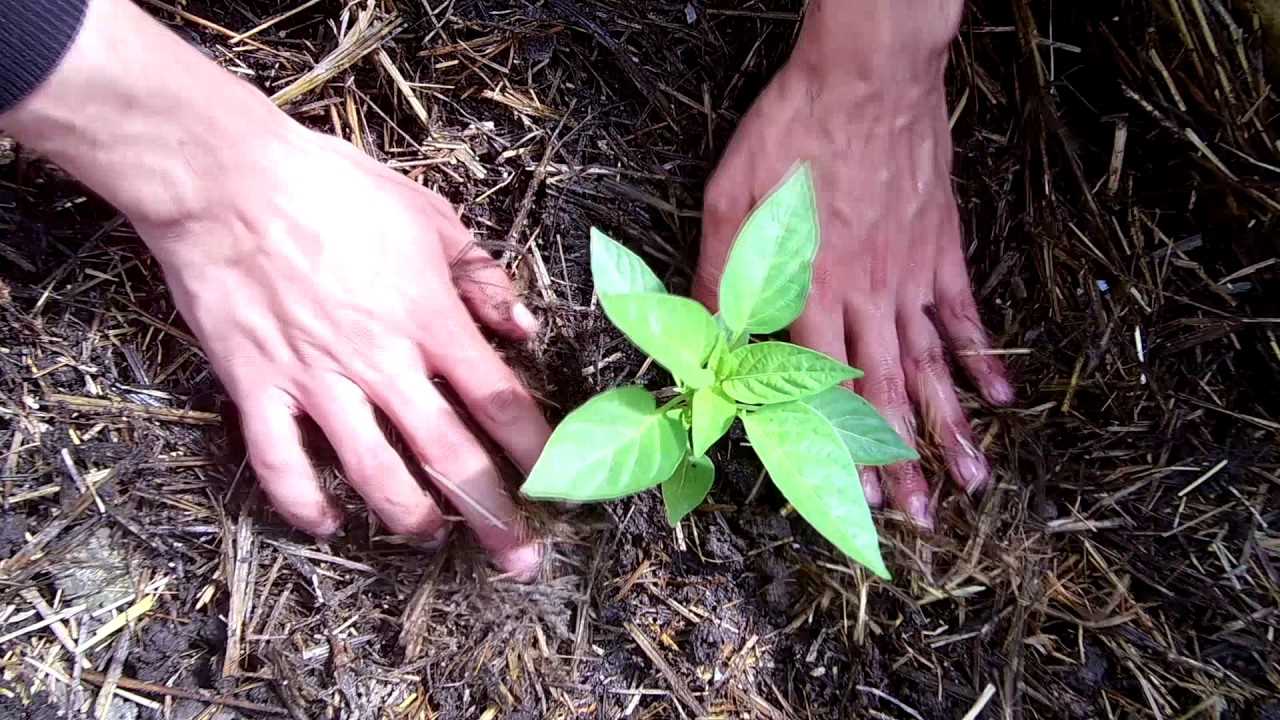
После того, как правильно высадить рассаду перца в грунт, необходимо обеспечить оптимальные условия для приживаемости растений. Один из важнейших аспектов – это полив.
Сразу после высадки семян или рассады перца, необходимо обильно полить грядки. Это поможет улучшить контакт между корнями растений и почвой, а также обеспечит необходимую влажность для начала активного роста перца.
Однако в дальнейшем следует следить за регулярным поливом рассады перца, особенно в жаркую погоду. Растения нуждаются во влажности, чтобы не испытывать стресс и не перегреваться. Регулярный полив поможет избежать пересыхания почвы и недостатка влаги для корней перца.
Особенно важно правильно дозировать полив. Переизбыток влаги может привести к гниению корней и поражению растений грибковыми заболеваниями. Поэтому, необходимо учитывать особенности почвы и влажность окружающей среды, чтобы регулировать количество воды, подаваемой на грядки с перцем.
Вопрос-ответ:
Какие сорта перца лучше всего подходят для выращивания в регионах с коротким летом?
В регионах с коротким летом лучше всего подходят ранние сорта перца, такие как «Атлет», «Алиса», «Добрыня» и «Золотистый дождь». Они быстро созревают и успевают прижиться до начала осени.
Какой подготовительный уход требуется для рассады перца перед посадкой в грунт?
Перед посадкой рассады перца в грунт необходимо провести несколько этапов подготовки. Сначала нужно закалить рассаду, вынося ее на улицу на несколько часов каждый день. После этого рассаду нужно обработать раствором медного купороса для профилактики болезней. Также рекомендуется удобрить почву органическими удобрениями перед посадкой.
Как правильно посадить рассаду перца в грунт?
Для правильной посадки рассады перца в грунт необходимо выбрать подходящее место с хорошей освещенностью и защитой от ветра. Затем нужно выкопать ямки глубиной около 10-15 см и разместить рассаду в них, оставляя расстояние между растениями около 40-50 см. После этого ямки нужно залить водой и засыпать землей, придавая ей форму горки.
Как часто и как поливать рассаду перца после посадки в грунт?
После посадки рассады перца в грунт необходимо регулярно поливать ее. В первые дни полив проводится каждый день, затем переходят на полив через день. Важно не переувлажнять почву, чтобы не вызвать гниение корней. Лучше поливать рассаду утром или вечером, когда солнце уже не такое активное.
Как защитить рассаду перца от вредителей и болезней?
Для защиты рассады перца от вредителей и болезней можно использовать различные методы. Например, можно установить специальные ловушки или использовать натуральные отпугиватели, такие как чеснок или перец. Также рекомендуется регулярно осматривать растения и при первых признаках болезней или вредителей принимать меры по их уничтожению.


